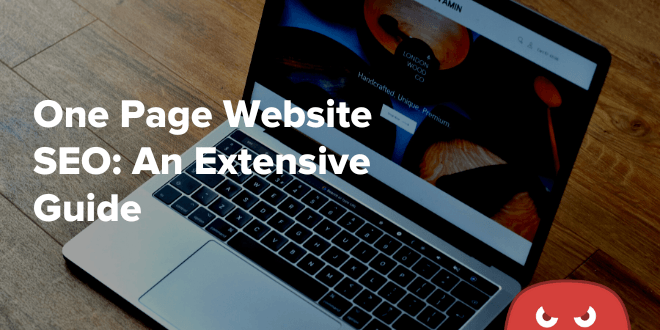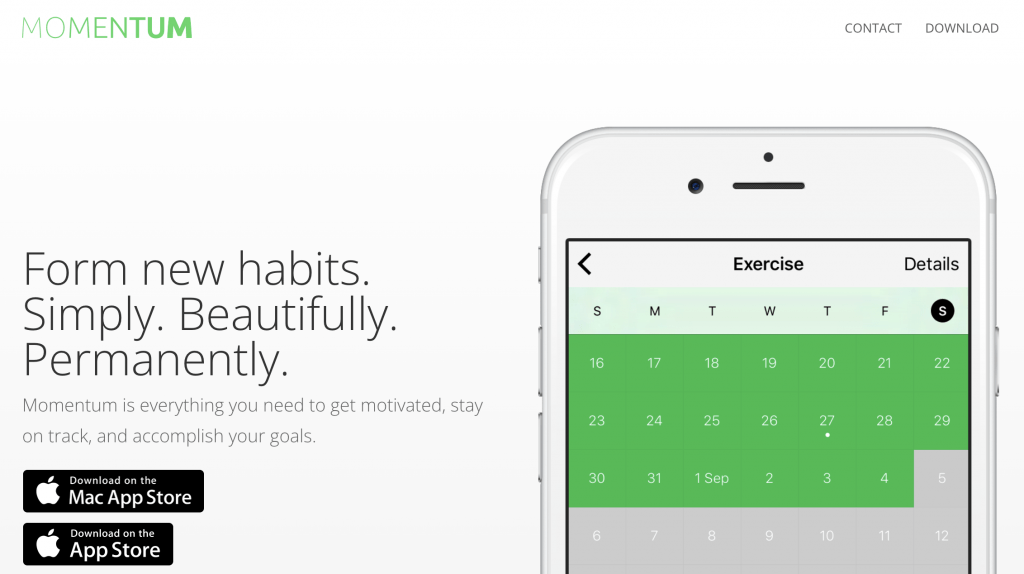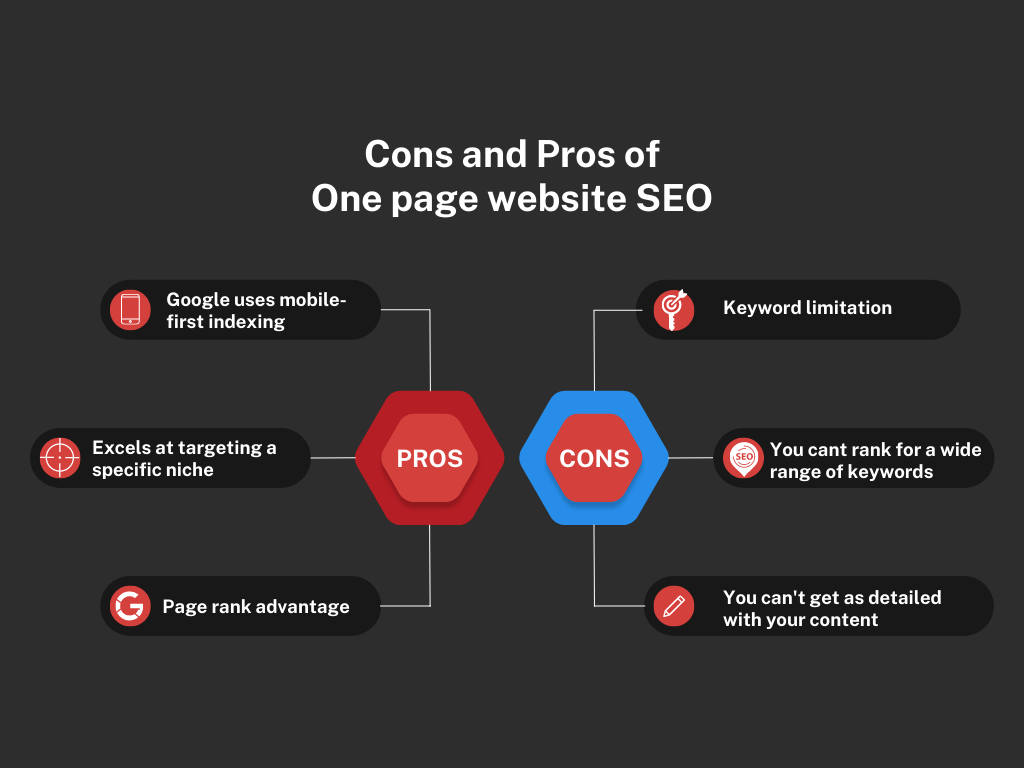Quick Links
Highrise IQ was able to increase product sign-ups by 37.5% by switching from a traditional website to a long-form, one-page website. Their findings are proof that a single-page site design makes sense if you’re only advertising a single product or have a very specific target audience.
What’s that?
A single-page site (or one-page site) is a website containing all its content on a singular page.
Instead of navigating to different pages, users can click on navigation links that direct them further down the page.
It’s a trend that’s risen in popularity recently, primarily to enhance the user experience for simpler sites. You see, large multi-page websites can be tricky to navigate and can even overwhelm users.
Yet, the single-page design has caught a lot of flack regarding search engine optimization. The consensus seems to be that they’re more challenging to optimize than multi-page websites.
But is it true? Is it impossible to rank on page one of Google with a one-page site?
Those are the questions we’re going to answer today. Read on to discover some candid SEO strategies for your one-page website.
The One Page Website SEO Stigma
As stated before, one-page websites have a bit of a negative stigma surrounding them in the SEO world. Many even claim that creating a single-page website is a death sentence for your ability to rank on search engines.
While they’re not wrong that SEO is challenging for one-pagers, it’s by no means impossible.
In fact, there are plenty of examples of one-page websites ranking #1 for their target keywords on Google and other search engines. The Momentum app is an example of a single-page design that ranks.
It’s just that one page website SEO takes a different approach and way of thinking. If you go about SEO for a one-pager like a multi-page website, you’re going about it the wrong way.
For one, you’ll need to focus more on link building and creating quality content. Keyword research is also imperative, as you’ll only be able to rank for one target keyword. That means you’ll need to get even more thorough with your research than usual.
Also, keyword optimization is doubly essential – so you’ll want to make sure you place the keyword in your title tag, meta description, and the body content at least 3 to 7 times.
If you need some inspiration for creating a one-page site, you can check out these successful examples.
One page website SEO: Pros and Cons
Before designing a one-page website, you’ll want to weigh the pros and cons, especially as they relate to your SEO.
While the single-page style may work for your niche – you don’t want to be completely invisible in the search rankings. That’s why it’s essential to consider if this web design style will work for you in the long term.
The pros
- Google uses mobile-first indexing – so having a website that can load on a mobile device is a must. One-page sites perform exceptionally well on mobile due to their simple design. Not only that, but there’s also an advantage in terms of page speed. That’s because most single-page websites have a low page weight (meaning a meager file size), so they can load 486% faster than heavy pages. As an example, a page weight of 1 MB is recommended. For a one-page site like Momentum – its total size is a meager 30 KB.
- Digital-marketing-wise, the single-page design excels at targeting a specific niche and holding their attention. You can use all the content on the page to drive users toward a particular call to action, which can have great results for your conversion rates. It’s also easier to guide customers down the sales funnel on a single page.
- With a multi-page site, you risk users visiting your landing pages in the incorrect order. Also, you may have important product information on a page that has no internal link pointing to it – which can cause a lack of visibility.
- Lastly, there’s a perk when it comes to pagerank. Whatever backlinks you acquire will all point to one page – granting you a desirable 1:1 ratio of links to pages.
The cons
- A significant drawback is that you can’t rank for a wide range of relevant keywords. Instead, you’ll have to focus on a handful, or in many cases, just one. That’s one of the biggest reasons why one-page websites developed such a negative stigma.
- If you rely on Google search to find new customers for your business, you might want to consider creating a multi-page site instead. That way, you can attempt to rank for a wide range of keywords and use other advanced SEO tactics. Yet, if you get most of your new business from other places, such as an eCommerce platform, the keyword limitation won’t be that big of a deal.
- Another drawback is that you can’t get as detailed with the content on your page. Instead of being able to create a new page for each topic – you’ll have to include everything in one spot. As a result, you’ll need to be more concise than you would with a multi-page site. You’ll want to make sure that your copywriters bring their A-game when writing copy for your single-page site.
How to Optimize Your Single-Page Website for SEO
Link-Building is your bread and butter
With a one-pager, you won’t have much in the way of advanced SEO tactics. That’s why link-building is such a critical practice for one page website SEO. You’ll rely even more heavily on link-building techniques for generating traffic and driving rankings.
You’ll definitely want to leverage any unlinked brand mentions that you can find. These are instances where another website mentions your brand – but doesn’t include a link back to your homepage.
To find them, you have two options. The first is to use Google’s Advanced Search Operators to pinpoint brand mentions that don’t have a link. Yet, that technique is a bit complicated – and it can take quite a bit of time to discover all the mentions that don’t have links.
The other option is to use a tool specifically designed for locating unlinked brand mentions. There are several of these tools out there, and they make finding brand mentions far easier.
Once you’ve found a page mentioning your brand, reach out to the site owner and politely ask for a backlink.
Another way to earn backlinks with high domain authority is to go the higher education route.
That’s where you choose a relevant scholarship for your content/business. Next, you decide to sponsor that scholarship on your website for a backlink on the college’s site. That can help you score backlinks from .edu websites, which Google loves.
Are you curious about your domain authority or the DA of a possible backlink? If so, don’t hesitate to use our free domain authority checker tool.
Break up your content into sections with anchor links
Even though your content is all on the same page, you need to find ways to break it up and give it some sort of structure.
By using DIV IDs and anchor links, you can replicate a multi-page site‘s traditional home, products, and services layout.
A DIV ID will allow you to create a link that ‘jumps’ to a different section on the page.
To put it into practice, designate a DIV (a divided section of content in your HTML code) and give it an ID.
The significant part about dividing your website into sections is that you can target different keywords for each one. That will allow you to attempt to rank for more relevant keywords than you would normally.
It also enhances your user experience because users can quickly jump to the section they need. An example would be hitting a DIV ID called ‘Pricing’ that directs customers to their pricing options.
Do rigorous keyword research
You’re limited on keywords, so the ones you choose better be stellar. That means making some tough decisions on which keywords to use and which to ignore.
To help you out, you can use the keyword research tool from The HOTH.
Also, one page website SEO breaks the golden rule of only using one H1 per web page. It’s actually a good idea to use more than one H1 to break up your content and give it some more structure. Beyond that, you should use a new H1 heading whenever you’re introducing a new keyword.
Use Google Analytics to track your success
Lastly, you’ll want to have a way to measure the effectiveness of your SEO efforts. That’s where free tools like Google Analytics come into play.
You can use its reporting features to see if you’re generating more traffic and to see where your users come from geographically.
To see how Google views your website, you can use Google Search Console. It will also provide your impressions, click-through rate, and average position metrics.
Concluding Thoughts: One Page Website SEO
By now, you should better understand how to optimize a single-page website for search engines like Google.
A one-page website can be just what the doctor ordered for eCommerce, mobile apps, and selling one product.
You can help your one-page website show up on the search engine results pages by adapting your SEO strategy. Remember to focus on link-building, do intense keyword research, and measure your success as you go.
Do you not have time to optimize your single-page websites for search engines?
If so, don’t wait to try out our managed SEO services at HOTH X. We’ll handle everything SEO-related for you so you can focus on running your business. Also, feel free to schedule a call to speak with our expert consultants.











That was quick! Thank you very much.
“What an invaluable resource! One-page websites have their own unique SEO challenges, and this guide addresses them comprehensively. From optimizing content to maximizing user experience, it’s a must-read for anyone looking to make the most of their single-page site’s SEO potential. Thanks for sharing such valuable insights!”